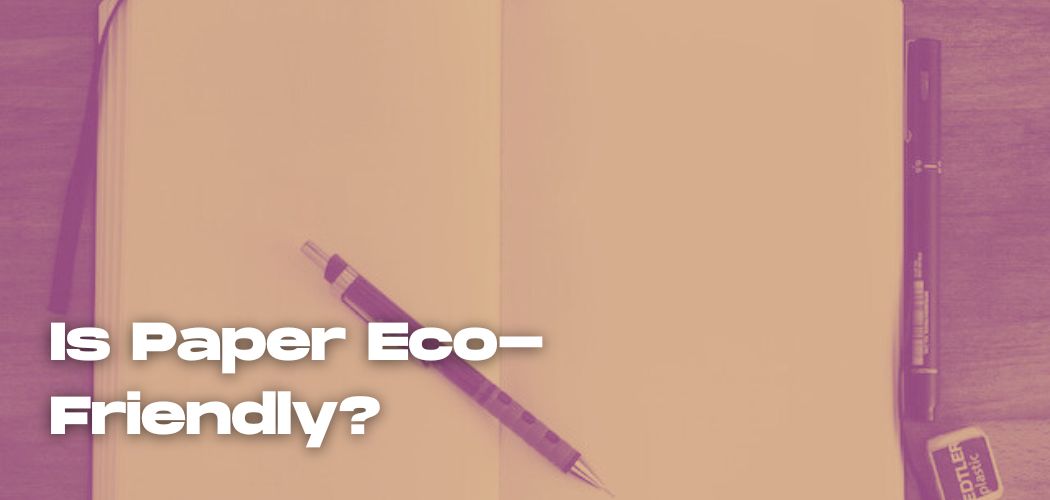In this digital age of e-books and iPads, many people forget the importance of paper.
They believe that going paperless is the more eco-friendly option. But what they don’t realize is that producing electronic devices requires mining for rare earth metals and other harmful materials.
These materials are toxic and can severely damage the environment.
On the other hand, producing paper is a more sustainable option. Paper is made from a renewable resource – trees. And unlike electronic devices, paper can be recycled and reused multiple times without causing any harm to the environment.
So, is paper eco-friendly? The answer is yes.
Is Using Paper Eco-friendly?
There is a lot of debate surrounding the eco-friendliness of paper.
On the one hand, paper is biodegradable and made from trees, a renewable resource. But on the other hand, the need for paper is one major contributor to large-scale deforestation.
In terms of recycling, paper is one of the easiest materials to recycle. It can be recycled into new paper products an infinite number of times without losing any of its quality or functionality.

However, the process of recycling paper requires lots of energy and water, and it also creates pollution.
If we consider the production process of paper, it is clear that it is not an environmentally friendly material. Paper production requires large amounts of water and energy and results in the release of harmful greenhouse gases.
So while paper wins at usefulness, it scores very low on the sustainability scale, unfortunately.
Hence, the best way to reduce the environmental impact of paper is to use it sparingly and recycle it when possible.
Recycled Paper Vs. Virgin Paper
Although the manufacturing of paper requires energy and results in pollution, using recycled paper can reduce environmental impact.
In fact, recycling one ton of paper can save 17 trees, 7,000 gallons of water, three cubic yards of landfill space, and enough electricity to power a home for six months.
Recycled paper also helps conserve resources, as it takes less energy and water to make recycled paper than to make new paper from scratch.
When you choose recycled paper, you’re not only helping the environment, but you’re also supporting the recycling industry.
Is Paper Really More Eco-Friendly Than Going Paperless?
There is a lot of debate over whether or not going paperless is more eco-friendly than using paper.
The answer to this question is not entirely clear-cut. There are pros and cons to both using paper and going paperless.
Pros of Using Paper
- Paper is biodegradable. It can be recycled and turned into new paper products.
- Paper is made from a renewable resource (wood pulp).
- Paper can be used for a variety of purposes, including writing, printing, and packaging.
- There is a wide variety of paper products available, including recycled and environmentally friendly options.
Cons of Using Paper
- Production of paper requires the use of energy and water.
- Paper manufacturing can produce pollutants, including greenhouse gases.
- Deforestation is often associated with paper production.
Pros of Going Paperless
- Eliminating the need for paper can save energy and resources.
- Going paperless can reduce the amount of waste produced.
- Going paperless can help to protect forests.
Cons of Going Paperless
- Some people argue that electronic devices contain harmful materials that are not environmentally friendly.
- Eliminating the use of paper can be difficult for some people, particularly those who are not comfortable with using technology.
So, is paper more eco-friendly than going paperless? This depends on individual circumstances and the type of paper products being used.
However, it is generally agreed that going paperless has environmental benefits that outweigh the benefits of using paper.
Are Paper Products Bad for the Environment?
Paper products contribute majorly to land and water pollution. Discarded cardboard and paper products make up around 26% of the waste in landfills.

When these paper products are left to decompose in landfills, they release methane gas which contributes to the greenhouse effect and global warming, 25 times more than carbon dioxide.
The only way to reduce the environmental impact of paper is to recycle it after use.
How Do You Make Paper More Eco-friendly?
Making paper more environmentally friendly typically involves making changes to the production process.
For example, some mills use less energy and produce fewer pollutants. They may also use recycled fiber content in their papers, which reduces the need for virgin pulp.
Additionally, manufacturers can use water-based inks instead of petroleum-based inks, and they can choose to use chlorine-free bleaching processes.

These are all small steps that can make a big difference in terms of reducing the environmental impact of paper production.
When it comes to using paper, there are also ways to be more eco-friendly.
For example, you can choose to print on both sides of the paper whenever possible, or you can print in smaller quantities.
You can also recycle paper when you’re done with it, which helps to conserve resources. Recycled paper reduces the need to cut down more trees and creates less pollution in the manufacturing process.




